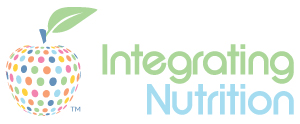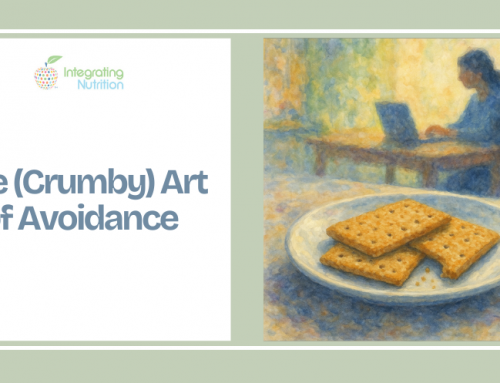Clean Eating sounds like a good thing to commit to.
After all, who can argue with an approach of eating minimally processed, nutrient-rich foods? Moreover, it is certainly a good idea to not pursue a diet that is made up of heavily processed foods that include synthetic ingredients and are packed with hydrogenated fats, sodium, preservatives, food dyes and other chemicals.
But while wanting to eat nutritious, nourishing meals is a great idea, when the desire to “eat clean” becomes an all-or-nothing rule—when lists of “approved” foods rule all—I’d argue that there is a problem. Because clean eating stops being a healthy pursuit and starts being just another version of black and white, all-or-nothing eating.
Clean Eating as a Form of Black and White Eating
One of the mindsets I have been consistently encouraging everyone (friends, family and clients) to let go of is black and white thinking. Black and White eating sets up a moral hierarchy wherein foods—and sometimes the people who eat them—are labeled good or bad, pure or somehow contaminated. And within that dynamic, there’s almost no room for flexibility, intuition, or even common sense.
Readers of my book Why Did I Just Eat That? will already know that I believe that a person’s relationship with food reflects their relationship with everything else in their life. The more rigid and perfectionistic someone might be in one area—in this case, eating—the more likely they are to apply that same inflexible mindset to their job, their expectations of others, or how they might measure their own worth.
This is not a rare dynamic, either. We are now living in a nuance-free era of stark polarization. From politics to social media arguments, there’s a powerful current of black and white thinking all across our culture. People are either all in or all out, absolutely right or absolutely wrong, worthy or unworthy. Clean eating taps square into that energy. Taken to extremes, it asserts that to not be perfectly pure in your food choices means there is something terribly wrong with you.
The Downside of Clean Eating
When we come to believe only “clean” foods are acceptable, to eat something outside that narrow list starts to feel like a personal failing. A fixation on food purity can disconnect us from our own body. As with any form of Black and White thinking, strict rules can muffle the natural signals of hunger, fullness, and satisfaction. And the consequences are not limited to the kitchen. We might decline invitations or feel uncomfortable sharing a meal simply because there aren’t any “approved” options. Moreover, this constant striving for purity drains the joy from food altogether. Meals stop being a source of potential delight and instead become a source of potential contention, where every bite must be justified.
And as with the case with other restrictive diets, the tighter we pull the reins, the more likely the reins are to snap. An extended period of clean eating often ends with rebound eating. If a clean eater drops her guard, she may think, “I’ve already blown it, so I might as well eat everything.” What started as an attempt to feel in control ends up fueling the very chaos clean eating was established to avoid.
Rejecting the Inflexibility of Clean Eating
What is preferable, of course, is a default attitude of flexibility. When it comes to Clean Eating, a more balanced approach is to look at eating on a case-by-case basis. Outside of medical reasons—like genuine allergies, sensitivities, or other medical conditions—your food choices don’t need to be policed by rigid rules. Instead, you might well ask yourself these three questions:
- What is most beneficial for me right now?
- What would feel satisfying and appropriate in this context?
- What is my intuition telling me my body needs?
These questions are the heart of an all-foods-fit mindset. It means you can choose a green smoothie one day and a slice of pizza the next without believing either decision defines your worth. You can eat to nourish your body and honor your enjoyment without labeling yourself good or bad. After all, food doesn’t have to be a purity test. It’s just food.
And let’s make room for a beautiful ripple effect: as we practice more flexibility with food choices, let’s be mindful of more flexibility in other areas of our lives. Let’s embrace nuance wherever it shows up, trust ourselves to find balance without rigid rules, and remember that good enough truly is good enough.





